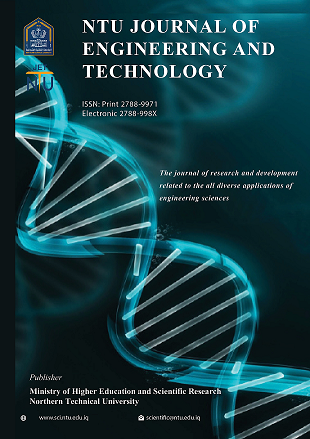Streaming Database System for Deaf People
DOI:
https://doi.org/10.56286/ntujet.v1i3.154Keywords:
Streaming database; data mining; big data.Abstract
Most of the traditional SQL keeps database records that do not often alternate. Models are client connection control systems or web and website online systems that replace like clockwork/seconds. Recently, programmers had composed dense codes to make database alter with converting or streaming records. Creating vast micro services to cope with stream records is exorbitant and often instable. SQL streaming database cope with record streams with insignificant coding and convey non-stop research for an extensive variety of forms of cutting-edge packages. A streaming database works with dynamic records that modification constantly. This converting record triggers other inquiries and packages as opposed to traditional way. The main characteristics of streaming database are continuous record of new data input, update the database status in real time, and answer online queries with consistency of database state. Standard database requires human to supply a reaction for streaming events. For example, when a customer buys an object on a commercial web enterprise human contribution triggers the reaction. The records in a streaming database are sort of streaming events in which it examines, gathers, and cycles those records streams and catches the records to be used gradually alarms, perceptions, questions, or packages. This research follows streaming database of deaf people to simultaneously provide understanding of events. Experiments showed that the streaming database structures are more appropriate for deaf people communicating with each other and with normal people as well. Extracted from the fact that 70% per cent of the sample were satisfied with the suggested system , more than 80% percentage of normal people are satisfying with the system, while more than 85% percentage of deaf and normal people are happy with the system. This type of on line updating and its applications can be applied for people with learning special needs in various ways.
References
Open Data Science ODSC, “Intro to Streaming Databases,” Open Data Science, 2021. [Online]. Available: https://medium.com/@ODSC/intro-to-streaming-databases-c238818babdc. [Accessed: 20-Apr-2021].
A. Al Abd Alazeez, S. Jassim, and H. Du, “EINCKM: An Enhanced Prototype-based Method for Clustering Evolving Data Streams in Big Data,” Proc. 6th Int. Conf. Pattern Recognit. Appl. Methods, no. Icpram, pp. 173–183, 2017.
B. Stopford, “The Rise of the Event Streaming Database,” TheNewStack, 2020. [Online]. Available: https://thenewstack.io/the-rise-of-the-event-streaming-database/. [Accessed: 15-Apr-2021].
O. Koller, “Quantitative Survey of the State of the Art in Sign Language Recognition,” 2020.
QlikQ, “DATABASE STREAMING,” QlikQ, 2021. [Online]. Available: https://www.qlik.com/us/data-streaming/database-streaming. [Accessed: 13-Mar-2021].
A. T. Y. T. A. A. Alazeez, “DED: Drift Principle in Educational Evolved Data,” Tikrit J. Pure Sci., vol. 26, no. 2, pp. 118–125, 2021.
R. Wolfe et al., “Exploring Localization for Mouthings in Sign Language Avatars,” Proc. Int. Conf. Lang. Resour. Eval., no. May, pp. 207–212, 2018.
M. A. Alobaidy and S. K. Ebraheem, “Application for Iraqi sign language translation on android system,” Int. J. Electr. Comput. Eng., vol. 10, no. 5, pp. 5227–5234, 2020.
G. Amorim, A. S. L. Ramos, G. de Castro Junior, L. de S. Afonso, and H. C. Castro, “Coronavirus, Deafness and the Use of Different Signs of the Area in Health during a Period of Pandemic Time: Is That the Best Option to Do?,” Creat. Educ., vol. 11, no. 04, pp. 573–580, 2020.
DEVINSIDER, “The purpose and benefits of data stream processing,” DELLTecnologyWorld, 2021. [Online]. Available: https://www.dev-insider.de/what-is-a-streaming-database-a-1002982/.
A. T. Y. T. A. A. Alazeez, “HPPD: A Hybrid Parallel Framework of Partition-based and Density-based Clustering Algorithms in Data Streams Ammar,” Raf. J. Comp. Math’s., vol. 1, no. 1, pp. 67–82, 2020.
A. T. Y. Al Abd Alazeez, S. Jassim, and H. Du, “SLDPC?: Towards Second Order Learning for Detecting Persistent Clusters in Data Streams,” 2018 10th Comput. Sci. Electron. Eng., vol. 978-1–5386, pp. 248–253, 2018.
A. Al Abd Alazeez, S. Jassim, and H. Du, “TPICDS: A Two-phase Parallel Approach for Incremental Clustering of Data Streams,” 24th Int. Eur. Conf. Parallel Distrib. Comput., 2018.
P. Wayner, “Vision for future of computing,” Venture Beat, 2021. [Online]. Available: https://venturebeat.com/2021/04/04/what-is-a-streaming-database/.
C. Riccomini, “Streaming databases in realtime with MySQL, Debezium, and Kafka,” WePay Chase Company, 2017. [Online]. Available: https://wecode.wepay.com/posts/streaming-databases-in-realtime-with-mysql-debezium-kafka. [Accessed: 01-Mar-2021].
Hazelcast, “What Is a Streaming Database?,” Hazelcast, 2021. [Online]. Available: https://hazelcast.com/glossary/streaming-database/. [Accessed: 12-Apr-2021].
A. Al Abd Alazeez, S. Jassim, and H. Du, “EDDS: An Enhanced Density-Based Method for Clustering Data Streams,” 2017 46th Int. Conf. Parallel Process. Work., pp. 103–112, 2017.











